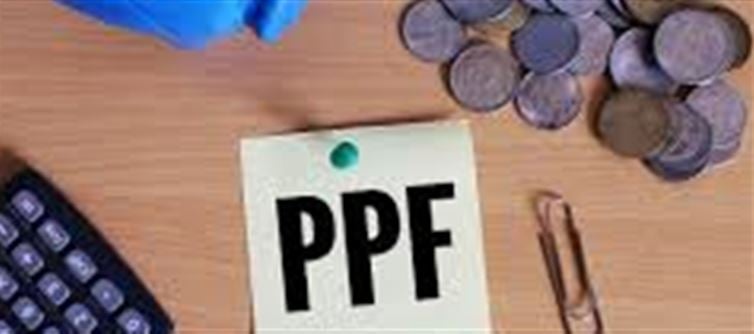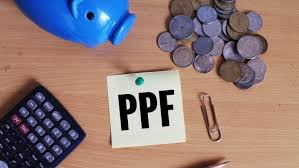
When you face an unexpected financial need—whether it’s for medical emergencies, education, or a wedding—loans often become the quickest solution. However, choosing the right type of loan is crucial. Among the most popular options are Personal Loans and Loans Against PPF (Public Provident Fund). Both options have their advantages and disadvantages, but which one is safer for your finances? Let’s break down both choices in detail to help you make a well-informed decision.
1. What is a Personal Loan?
A Personal Loan is an unsecured loan that you can avail of without pledging any collateral. It’s usually a short-term loan and is offered based on your credit score, income, and repayment capacity.
· Loan Amount: Personal loans typically range from Rs 50,000 to Rs 25 lakh.
· Interest Rate: The interest rates on personal loans are generally higher than those on secured loans. You can expect rates ranging from 10% to 25% per annum, depending on your credit profile.
· Tenure: Personal loans have flexible repayment terms, typically between 1 year to 5 years.
· Processing Fees: Lenders charge processing fees, usually ranging between 1% to 3% of the loan amount.
· Risk: Since personal loans are unsecured, they come with higher interest rates. The lender may take legal action if you default on repayments.
2. What is a Loan Against PPF?
A Loan Against PPF is a secured loan where you borrow funds by pledging your PPF account balance as collateral. PPF (Public Provident Fund) is a government-backed, long-term savings instrument that offers tax benefits and safe returns.
· Loan Amount: You can borrow up to 90% of your PPF balance as a loan. However, this is capped at a specific limit set by the bank.
· Interest Rate: The interest rate on loans against PPF is usually lower than that of personal loans and is typically in the range of 1% to 2% above the current PPF interest rate. As of 2025, PPF interest is around 7.1% annually, so the loan rate might be around 8.1% to 9.1%.
· Tenure: The loan repayment period is typically capped at 36 months (3 years).
· Risk: Since the loan is secured against your PPF balance, if you fail to repay, the bank can seize the funds from your PPF account, which may affect your retirement savings.
3. Personal Loan vs Loan Against PPF: A Comparison
Here’s how the two options stack up in terms of key financial parameters:
Criteria
Personal Loan
Loan Against PPF
Loan Amount
Rs 50,000 to Rs 25 Lakh
Up to 90% of your PPF balance
Interest Rate
10% to 25% p.a.
1% to 2% above PPF rate (approx. 8.1% to 9.1%)
Repayment Tenure
1 to 5 years
Usually 3 years
Collateral Required
No collateral (unsecured)
Your PPF balance as collateral
Processing Fees
1% to 3% of the loan amount
Generally lower than personal loans, or none
Loan Approval Time
Fast approval, within a few days
Usually slower, as it involves verification of PPF balance
Risk Involved
High – Risk of default affects credit score
Moderate – Risk of losing your PPF savings if default occurs
Flexibility
Flexible use – Can be used for any purpose
Limited use – Can only be used for personal needs
4. Which Option Is Safer for Your Finances?
4.1 Risk Assessment
· Personal Loan: Since personal loans are unsecured, they come with a higher interest rate. While you don’t risk losing any assets, the financial burden is higher due to interest and fees. Failing to repay may lead to severe consequences, including legal action and damage to your credit score. If you are unsure about your ability to repay the loan on time, a personal loan could be a risky option.
· Loan Against PPF: This is a secured loan, where the PPF balance acts as collateral. While the risk of losing your PPF savings exists in case of default, the interest rate is lower than that of personal loans. Moreover, you won’t have to worry about legal action or a severe impact on your credit score unless you default on the loan. However, taking a loan against your PPF reduces the amount of money earning tax-free interest and compounds annually, potentially harming your future savings.
4.2 Flexibility
· Personal Loan: One of the major advantages of a personal loan is its flexibility. You can use the loan amount for any purpose (education, medical emergency, travel, etc.), without any restrictions.
· Loan Against PPF: A loan against PPF can only be used for personal purposes, and the amount you can borrow is limited to 90% of your PPF balance. Additionally, your PPF account is tied up as collateral, which may limit your future flexibility with your savings.
4.3 Interest and Repayment
· Personal Loan: While the interest rate can be higher, it can be more flexible in terms of repayment tenure. The loan tenure can be extended up to 5 years, making the monthly EMI more affordable. However, the interest burden can add up over time, especially if you have a large loan amount.
· Loan Against PPF: The interest rate is lower, and the loan tenure is typically shorter (up to 3 years). While this means higher monthly installments, you’ll pay less interest overall compared to a personal loan. The quick repayment period could help you return the borrowed amount sooner and restore your PPF balance for future growth.
5. When to Choose a Personal Loan?
· If you don’t have significant savings or assets to use as collateral.
· If you need a larger loan amount or prefer flexibility in how you use the funds.
· If you have a strong credit score and can secure a personal loan with lower interest rates.
· If you can comfortably manage monthly repayments within a longer tenure.
6. When to Choose a Loan Against PPF?
· If you have a substantial PPF balance and need a smaller loan amount.
· If you need lower interest rates and are comfortable with a shorter repayment period.
· If you are okay with pledging your PPF balance as collateral and are confident in your ability to repay the loan within the stipulated time frame.
· If you want to maintain a good credit score and avoid the high risks of unsecured loans.
7. Conclusion: Which Option Is Safer?
· For short-term financial needs and if you are looking for a lower risk option, Loan Against PPF is a safer choice. It provides lower interest rates, is backed by your savings, and doesn’t harm your credit score if repayment is managed well. However, the risk of reducing your future PPF returns should be considered.
· On the other hand, Personal Loans are unsecured, have higher interest rates, and come with the risk of defaulting. They are riskier, especially if you are uncertain about your repayment ability.
Ultimately, if you have adequate PPF savings and are confident in repaying the loan quickly, a Loan Against PPF could be the safer and smarter choice. However, if you need greater flexibility and can manage higher interest rates, a Personal Loan may work better for your immediate needs.
Disclaimer:
The views and opinions expressed in this article are those of the author and do not necessarily reflect the official policy or position of any agency, organization, employer, or company. All information provided is for general informational purposes only. While every effort has been made to ensure accuracy, we make no representations or warranties of any kind, express or implied, about the completeness, reliability, or suitability of the information contained herein. Readers are advised to verify facts and seek professional advice where necessary. Any reliance placed on such information is strictly at the reader’s own risk.




 click and follow Indiaherald WhatsApp channel
click and follow Indiaherald WhatsApp channel